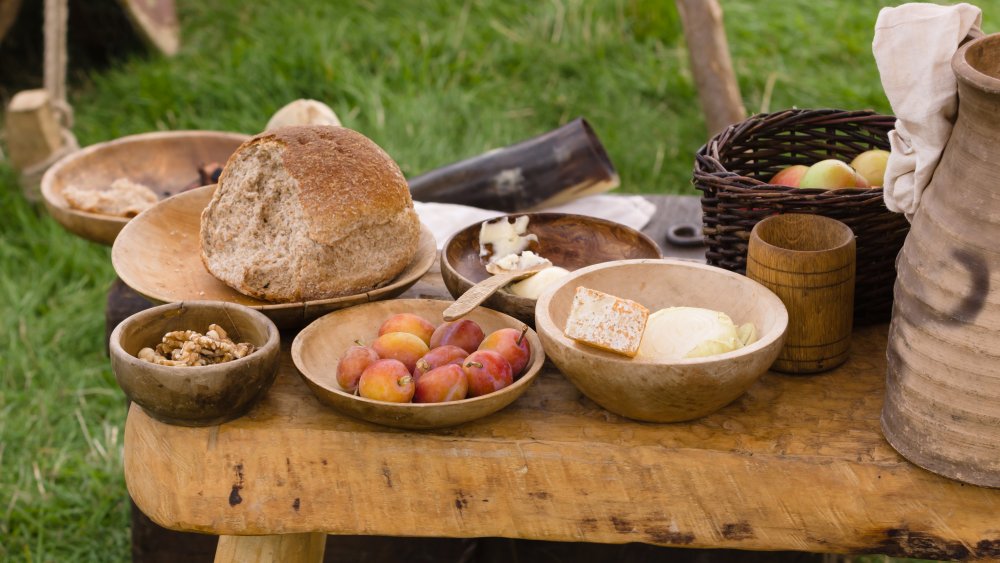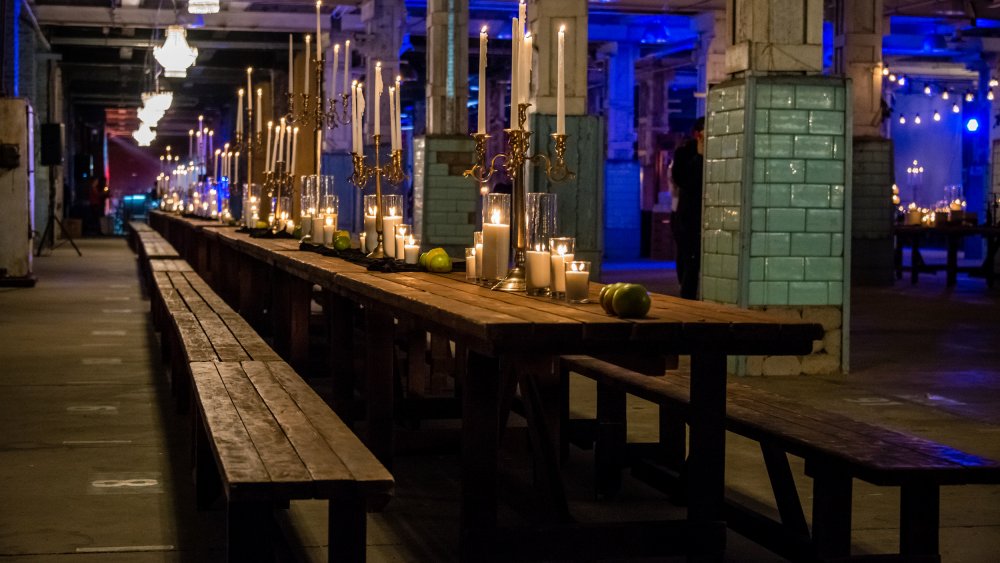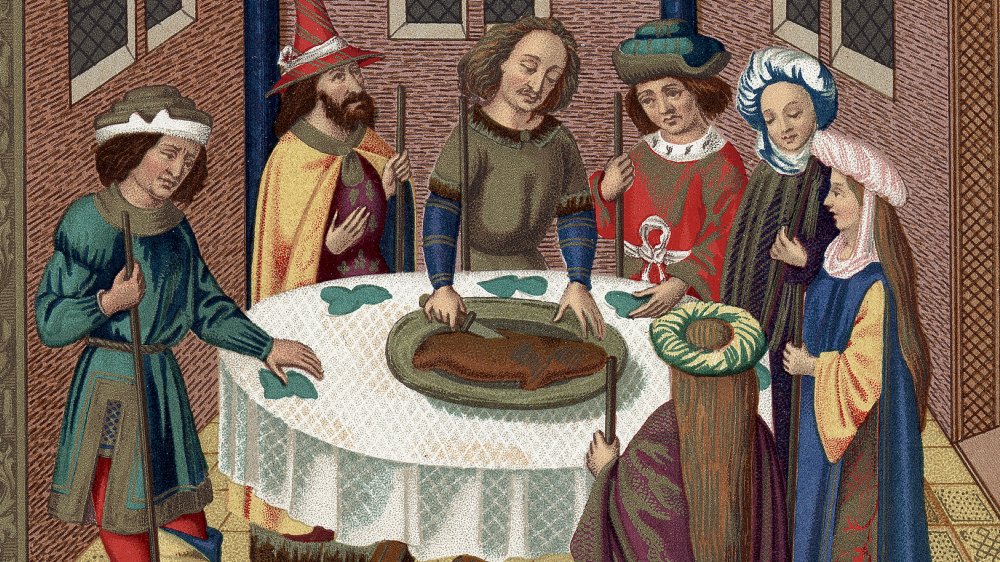Why The Food From The Middle Ages Was Dangerous
The Middle Ages was a time of great danger, what with wars and plagues and all of that. People didn't expect to live to old age. Unfortunately, one of the everyday dangers of life in the Middle Ages was something that should have helped prolong life, but often didn't. Their food could kill them.
Many of today's recipes trace their roots back to the Middle Ages. Cooks had to be inventive to make some food palatable. There are even rumors that spices were used to mask the taste of literally rotting meat (more on that in a moment). Safe to say that the food at that time would rarely pass any health check these days. Most of the culinary fare during the Middle Ages would have tasted far different from what we eat today. Even with rare spices, there wasn't a lot of balance of flavors.
According to Culinary Lore, spices weren't actually used to make rotting meat tasty, but rather were used to preserve meat. Much of the food available during the Middle Ages was expensive, so most people would try to make sure none of it was wasted. Preservation methods included dry-salting, pickling (yes, even beef and pork), gelatin, smoking, and candying. Honey was also used to preserve food. Contrary to popular belief, though, spices from the East like cardamom, pepper, and nutmeg that feature in most medieval recipes were not widely used — they were too expensive. Strictly rich people fare.
Some bread included fungus
Everything in those days was cooked, explained the British Library. They believed that green salads and raw fruits "will make your master sick."
The type of meat people ate depended on their station in life. Wealthy people, with their vast lands, could keep livestock and catch fish. This allowed them to have a more varied diet than others. Along with their fancy new spices, they ate venison and peacock. Banquets were feasts — not just for the stomach, but also for the eyes. Tables were often filled with colorful jellies and pies. Cooks made elaborate sugar sculptures called subtleties that were anything but subtle. Dishes weren't separated between sweet and savory, and guests were encouraged to gorge themselves silly. Medieval etiquette books however, warned against flatulence, scratching flea bites, and nose picking. By comparison, the poor had minimal diets. They could only really keep pigs in the forest, and sometimes cows, so they only ate dairy-based meals. Fish was occasionally eaten.
But all people in the Middle Ages, of all stations of life, ate bread. It became a staple. They didn't have plates in many areas, so they used something called a trencher — three-day-old loaves of bread used as plates, says Medieval Cookery. Yet even bread could be hazardous, sometimes containing a fungus called claviceps purprea, which cuts off blood supply to the extremities, writes National Geographic. This caused what's known as St. Anthony's fire. It was mostly found in rye.
They mostly drank beer, and often suffered lead poisoning
If you weren't sickened by a fungus with your belly full of peacock, you might be going through life in a state of mild drunkenness. Without access to clean, potable water, people relied on a mild beer to slake thirst. The University of Pennsylvania wrote that this beer had little in common with the beer consumed today — it was mainly flavored with the bark of fir trees, thyme, and even eggs. Underage drinking wasn't a concern because everyone, including children and babies, drank beer.
If you were rich, sometimes you got lead poisoning. Smithsonian Magazine reported that skeletons studied by researchers were found with traces of lead and mercury. It turned out some platters and pottery were decorated with glazes containing both those substances. Salty and acidic foods placed on top of these pots partially dissolve the chemicals and seep into the food.
Most of the skeletons studied were wealthy people in urban areas, so scientists said that poorer people had less lead in their system. One reason was probably that they couldn't afford platters anyway. Well, there's at least one thing that goes well for poor people during the Middle Ages.
If you were in the Middle Ages and survived all of your food trying to kill you, congratulations. You might live until late adulthood.


